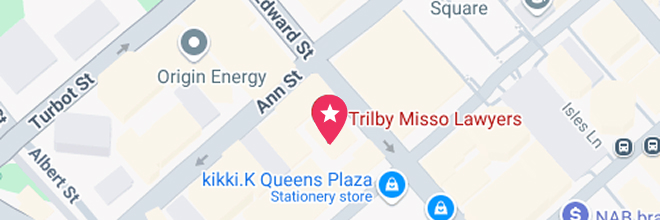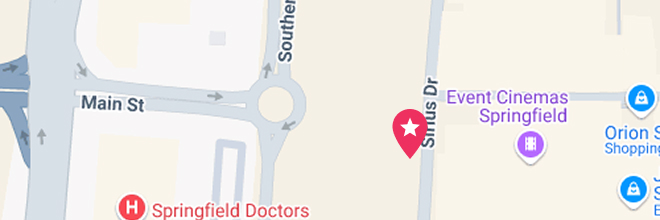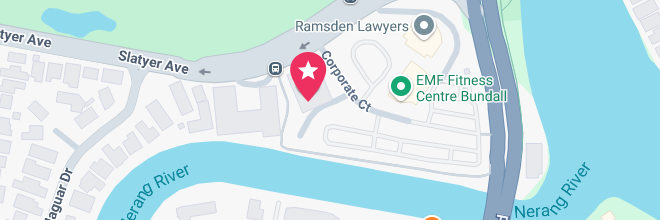Our Brisbane CBD Office
- Suite 400, Level 4/288 Edward St, Brisbane City QLD 4000
- (07) 3910 5470




Stress leave is an essential entitlement in Australian workplaces, offering vital support for employees dealing with excessive work stress or mental health challenges. It allows individuals to step away from work-related pressures and focus on their well-being. Whether referred to as mental health leave or stress leave from work, this type of leave is crucial for addressing psychological injuries or burnout caused by work-related conditions. With a growing focus on workplace mental health, understanding stress leave in Australia is more important than ever.
So, what is stress leave? In simple terms, stress leave is time off work that an employee takes to recover from significant stress or mental health issues, often triggered by workplace conditions. Recognised under Fair Work Australia guidelines, stress leave can fall under personal or sick leave entitlements. This means that employees experiencing work stress leave can access paid stress leave in many cases, provided they meet the criteria. Stress leave at work is not just about stepping away—it’s about addressing the root causes of stress and working towards recovery.
For those wondering, “how does stress leave work?” or “is stress leave paid in Australia?”, the process can vary based on your circumstances. Grounds for stress leave typically involve obtaining a medical certificate from a healthcare professional, confirming that your condition prevents you from fulfilling work duties. Stress leave Fair Work provisions also ensure that employees are protected when taking leave for legitimate mental health reasons. If you’re unsure how to apply for stress leave, reaching out to your employer or HR team is a good first step.
Taking stress leave doesn’t mean you have to face financial hardship. Many wonder, “do you get paid for stress leave?” The answer lies in your accrued sick leave entitlements. Paid stress leave is generally available to full-time and part-time employees who have built up leave balances. If you’ve been injured or stressed due to work conditions, WorkCover may also apply. This is especially relevant for those dealing with psychological injuries, as stress leave from work Australia-wide can sometimes overlap with WorkCover claims.
It’s also common to question, “how long can you take stress leave for?” or “how to go on stress leave?” The duration and process depend on the severity of your condition and advice from your doctor. When it comes to returning, employers are often required to provide support or adjustments, ensuring a smooth transition.
By understanding stress leave, from its definition to how it relates to Fair Work stress leave policies, you can navigate this process with confidence. Whether you’re looking into stress leave in Australia for yourself or supporting someone else, this blog will explore everything you need to know.
Stress leave is a workplace entitlement that provides employees with the opportunity to recover from significant stress or psychological injuries that impact their ability to work. In Australia, stress leave is commonly accessed through personal or sick leave entitlements under Fair Work Australia. This type of leave ensures that workers have the support and time they need to address mental health challenges caused by work-related conditions.
Stress leave is a vital tool in promoting mental well-being in the workplace. Whether it’s due to long hours, high-pressure environments, or interpersonal conflict, stress can lead to serious mental health conditions like anxiety and depression. Recognising the need for time off to recover, Fair Work stress leave provisions offer protections for employees needing time to focus on their mental health.
In Australia, stress leave is not a separate category of leave but is covered under existing sick leave entitlements. This means that if an employee is suffering from work-related stress, they can utilise their accrued sick leave as stress leave from work. Paid stress leave is generally available to full-time and part-time employees, while casual workers may need to explore alternative options, such as unpaid leave.
Understanding what stress leave is can help employees navigate their rights and entitlements more effectively. For example, stress leave from work in Australia can be taken for various reasons, including excessive workload, bullying, or exposure to traumatic incidents. If these factors cause a psychological injury, employees may also be eligible to lodge a WorkCover claim.
Stress leave – Fair Work Australia provisions ensure that employees have the right to take leave if they are unfit for work due to stress or mental health conditions. This means employees can take time off without fear of losing their job, provided they follow the correct procedures.
Key protections include:
For those asking, “is stress leave sick leave?” the answer is yes, it typically falls under the same category. However, the medical basis for stress leave often focuses on mental health challenges rather than physical illnesses.
Stress leave is appropriate when an employee is experiencing work-related stress to the point where it affects their ability to perform their job. Grounds for stress leave may include:
Knowing the grounds for stress leave can help employees determine whether they need time off and how to approach their employer for support.
Mental health leave, including stress leave, is essential for maintaining a healthy balance between work and well-being. Prolonged stress can lead to severe mental health issues, such as burnout, anxiety, and depression. Stress leave from work allows employees to seek medical help, regain their mental stability, and prevent further deterioration of their health.
The importance of mental health leave in Australia has grown significantly, with employers increasingly recognising the need to support their workforce. By taking stress leave, employees not only protect their own health but also contribute to a more sustainable and productive workplace environment.
If you’re wondering, “can I take stress leave from work?” the answer lies in your personal circumstances and medical advice. Employees experiencing stress must consult a healthcare professional to assess their condition and obtain a medical certificate if necessary. This documentation serves as the basis for taking stress leave, ensuring you can recover while staying compliant with workplace policies.
By understanding the basics of stress leave and its importance, employees can confidently take the steps needed to protect their mental health and well-being. Whether you’re asking, “how to take stress leave?” or “is stress leave paid?”, knowing your entitlements under Fair Work Australia ensures you can make informed decisions during challenging times.
Stress leave is an important entitlement for Australian workers experiencing significant mental health challenges caused by workplace stress. Whether referred to as mental health leave or stress leave from work, it provides employees the opportunity to step away from work-related pressures and focus on recovery. To access stress leave in Australia, understanding eligibility criteria and how the process works is key. This section explains what is stress leave, who can take it, and the steps required to apply.
Eligibility for stress leave Australia-wide is generally linked to employment status, medical evidence, and the nature of the stress. Here are the key factors that determine who is eligible:
If you are unsure about your eligibility, consider consulting your HR department or a legal professional to clarify your rights under stress leave Fair Work policies.
Stress leave, also known as mental health leave, is designed to support employees dealing with work stress leave situations that significantly impact their mental well-being. It is not a separate category of leave but is covered under existing personal or sick leave entitlements. Stress leave from work Australia-wide aims to help employees recover from conditions caused by workplace pressures, such as burnout, anxiety, or psychological injuries.
Taking stress leave from work is especially important in high-pressure environments. Whether you’re in Queensland, South Australia, or Victoria, stress leave in Australia offers protections that allow workers to prioritise their mental health without risking their employment. Mental health leave Victoria, for example, operates under the same Fair Work framework as stress leave QLD and stress leave South Australia.
One of the most common questions is, “is stress leave paid in Australia?” In most cases, employees are entitled to paid stress leave if they have accrued sufficient sick leave. This ensures workers can take time off without financial stress. However, if an employee has exhausted their leave entitlements, unpaid leave may need to be negotiated.
For those wondering “do you get paid for stress leave?” the answer lies in your sick leave balance. Paid stress leave can be a lifeline for individuals dealing with severe work-related stress. It’s also important to understand that Fair Work stress leave provisions ensure your rights are protected throughout the process.
Grounds for stress leave typically include the following workplace factors:
Understanding the grounds for stress leave helps employees determine whether they need time off and how to approach their employer.
If you’re wondering how to apply for stress leave, the process involves several steps:
For example, if you’re in Queensland, understanding how to apply for stress leave QLD involves the same principles as stress leave Victoria or stress leave South Australia. The Fair Work stress leave guidelines ensure uniformity across states.
“How long can you take stress leave for?” depends on the severity of your condition and advice from your doctor. Personal leave entitlements usually provide 10 days of paid sick leave per year for full-time employees. However, stress leave work situations involving severe psychological injuries may require extended leave, which can be negotiated with your employer.
If you’re asking, “can I take mental health leave from work?” or “how to go on stress leave?”, the answer depends on medical advice and your employer’s policies. Mental health stress leave is a recognised entitlement under Fair Work Australia, ensuring employees can address their mental health challenges with dignity and support.
By understanding eligibility, how stress leave works, and the application process, employees across Australia can take steps to protect their mental health. Whether you’re in Queensland, Victoria, or South Australia, stress leave in Australia provides vital protections to help workers recover and return to their jobs with improved well-being.
Stress leave is an essential workplace entitlement under Fair Work Australia, providing employees with the opportunity to step away from their duties and recover from work-related stress or mental health challenges. Knowing how stress leave works ensures employees can access their rights confidently and without fear of workplace repercussions. This section will address key questions such as “how does stress leave work?” and “is stress leave the same as sick leave?” while providing practical guidance for navigating the process.
Stress leave is typically taken as part of personal or sick leave entitlements. Under Fair Work Australia, employees are entitled to take stress leave from work if they are unfit to perform their duties due to stress-related conditions, such as anxiety, depression, or psychological injuries. Stress leave from work Australia-wide ensures that employees have the time and support needed to prioritise their mental health.
Stress leave is not a separate leave category but is instead accessed through accrued sick leave balances. For full-time and part-time employees, this means having access to paid stress leave if they have accumulated sufficient sick leave days. However, casual workers may need to explore unpaid leave or alternative options, as they do not accrue leave entitlements.
Stress leave – Fair Work Australia policies ensure employees are protected when taking leave for stress-related issues. These protections include:
These provisions help employees feel secure while taking time off for mental health challenges, ensuring a supportive work environment.
Many employees ask, “is stress leave sick leave?” The answer is yes. Stress leave falls under the same category as sick leave, as it is based on an individual’s inability to work due to health reasons. Whether it’s referred to as mental health leave or stress leave, the key requirement is medical certification to confirm the need for leave.
Fair Work Australia recognises stress leave as a legitimate reason to use accrued sick leave entitlements, meaning employees can access paid stress leave when eligible. For employees who have exhausted their sick leave balances, unpaid leave or worker’s compensation for psychological injuries may be considered.
If you’re wondering, “how to get stress leave from work?” the process involves several key steps:
By following these steps, employees can ensure a smooth process for taking stress leave and addressing their mental health needs.
Taking stress leave from work can feel overwhelming, especially if you’re already dealing with significant stress or mental health challenges. However, understanding the steps involved and knowing your rights can simplify the process and ensure you get the support you need. Whether you’re asking “how to apply for stress leave” or “how to get stress leave from work,” this section will guide you through every step of the process.
Before diving into the application process, it’s important to understand when taking stress leave is necessary. Grounds for stress leave often include:
If any of these apply to you, it may be time to explore stress leave as an option.
Applying for stress leave in Australia involves several steps. These ensure that your leave is approved and that you meet the requirements outlined by Fair Work Australia. Here’s what you need to do:
In some cases, work-related stress can lead to psychological injuries that qualify for worker’s compensation. If your condition meets the criteria, you may be eligible to lodge a WorkCover claim in addition to taking stress leave. This is particularly relevant if you’re experiencing mental health stress leave due to specific incidents at work.
A common question is, “is stress leave paid in Australia?” The answer depends on your accrued sick leave balance. For full-time and part-time employees, stress leave is paid if you have enough sick leave days available. This falls under personal leave entitlements governed by Fair Work stress leave policies.
If you’ve exhausted your paid leave, you may need to discuss unpaid leave options with your employer or explore worker’s compensation for stress-related psychological injuries. Remember, stress leave Fair Work provisions ensure your rights are protected, regardless of whether the leave is paid or unpaid.
The length of stress leave depends on the severity of your condition and medical advice. Full-time employees typically have access to 10 days of paid personal leave per year, but extended leave can be negotiated for serious conditions. For those wondering “how long can you take stress leave for?” the answer varies depending on your workplace policies and individual circumstances.
Stress leave in Australia is governed nationally by Fair Work Australia, but there may be slight differences in implementation across states. For example:
No matter where you’re located, understanding your state’s resources for stress leave can help you navigate the process effectively.
By following these steps, you’ll be well-prepared to take stress leave and focus on recovery. Whether you’re looking into “how to apply for stress leave” or wondering “how to take stress leave from work,” knowing your rights and following the correct process ensures a smoother experience.
Workplace stress can sometimes lead to severe psychological injuries, such as anxiety, depression, or post-traumatic stress disorder (PTSD). In these cases, employees may be entitled to lodge a WorkCover claim or pursue a common law claim to seek compensation for their injuries. Stress leave from work can play a crucial role in these situations, giving employees the time they need to recover while exploring their legal and financial options. This section explains how WorkCover and common law claims intersect with stress leave in Australia and what employees need to know.
WorkCover is a no-fault insurance scheme designed to support employees who suffer injuries or illnesses as a result of their work. This includes psychological injuries caused by workplace stress, such as:
If you’re experiencing a psychological injury that has arisen due to work-related stress, you may be eligible to lodge a WorkCover claim in addition to taking stress leave.
Lodging a WorkCover claim involves several steps:
Once your claim is approved, WorkCover may cover your medical expenses, lost wages, and rehabilitation costs.
If your psychological injury was caused by your employer’s negligence, you may have grounds for a common law claim. Unlike WorkCover claims, common law claims allow you to seek compensation for pain and suffering, future loss of earnings, and other damages.
For example, if your employer failed to address workplace bullying or knowingly placed you in unsafe conditions, a common law claim could hold them accountable. It’s important to consult a legal professional to explore this option and ensure you meet the necessary criteria.
Yes, stress leave from work and WorkCover can overlap in situations where an employee takes leave to recover from a psychological injury while their claim is being processed. Here’s how the two work together:
For employees asking, “is stress leave paid in Australia?” the answer depends on their leave balance. Paid stress leave is available if you have accrued sick leave entitlements. However, once your WorkCover claim is approved, you may receive payments directly from WorkCover for your time off work, which often exceeds the standard personal leave entitlements.
It’s also worth noting that employees in states like Queensland, South Australia, and Victoria are protected under Fair Work stress leave policies while their claims are being processed. This ensures job security and access to entitlements during recovery.
For those pursuing common law claims, stress leave at work can serve as evidence of the impact your psychological injury has had on your life and ability to work. Medical records, leave applications, and workplace incident reports can all strengthen your case. Legal advice is crucial when navigating common law claims, as the process can be complex and requires thorough documentation.
If you’re considering lodging a WorkCover claim or pursuing a common law claim while on stress leave, here are some tips to ensure the process goes smoothly:
Navigating stress leave and legal claims in Australia can feel complex, but understanding your options under Fair Work stress leave provisions and WorkCover schemes can help you make informed decisions. Whether you’re lodging a claim for psychological injuries or exploring common law claims, stress leave provides a crucial buffer to focus on your recovery and long-term well-being. For more information, consult resources like Fair Work Australia or WorkCover Queensland.
Returning to work after taking stress leave can feel daunting, but with the right support and planning, the process can be smooth and stress-free. Whether you’ve been on stress leave for a few weeks or several months, understanding your rights and responsibilities under Fair Work Australia is crucial. This section will cover how to transition back to work, the steps to take, and what employees and employers should do to support this process.
Before returning to work after stress leave, it’s important to ensure you are ready both mentally and physically. Here are the steps to prepare:
Under Fair Work stress leave provisions, employees are entitled to return to their role after taking stress leave from work. These rights ensure a supportive and fair transition back to work. Key rights include:
These protections are designed to encourage a healthy and safe return to the workplace.
Returning to work after stress leave often requires adjustments to help employees ease back into their roles. These adjustments may include:
Employers should work closely with employees to implement these adjustments, ensuring a supportive and sustainable return to work.
Employers play a critical role in facilitating an employee’s return after stress leave. Here’s what they should do:
Employers who prioritise a positive return-to-work experience can reduce the risk of further stress or burnout for their employees.
The length of time it takes to return to full capacity depends on the individual and the severity of their condition. For some employees, it may take a few weeks of lighter duties or flexible arrangements. For others, the process could take months, particularly if they’ve experienced significant psychological injuries.
It’s important to work closely with your healthcare provider and employer to set realistic timelines and avoid rushing the process.
For more information on returning to work after stress leave, visit the following resources:
Returning to work after stress leave is a significant step, but with the right planning, support, and understanding of your rights, it can also be a positive one.
Stress leave in Queensland is an essential workplace entitlement, providing employees with the time and support needed to recover from work-related stress or psychological injuries. Governed by Fair Work Australia, stress leave ensures that individuals can prioritise their mental health while maintaining job security. Whether you’re dealing with an excessive workload, workplace bullying, or a traumatic incident, stress leave offers a pathway to recovery.
In Queensland, stress leave may overlap with WorkCover claims, particularly if the stress is caused by workplace factors resulting in a psychological injury. WorkCover Queensland offers compensation for lost wages, medical expenses, and rehabilitation, supporting employees who are unable to work due to stress-related injuries. Understanding how to apply for stress leave and how it interacts with WorkCover is crucial for navigating your entitlements.
Returning to work after taking stress leave in Queensland requires careful planning and communication. Under Fair Work stress leave provisions, employees have the right to return to their role or a comparable one after taking leave. Employers must also provide reasonable adjustments, such as flexible hours or reduced workloads, to ensure a smooth transition back to work.
Stress leave is not just a safety net; it’s a vital tool for protecting mental health in the workplace. By understanding how stress leave works in Queensland, including its connection to WorkCover, employees can confidently take steps to recover and regain their professional footing. Whether you’re considering stress leave or planning a return to work, resources like the Fair Work Ombudsman and WorkCover Queensland can provide valuable guidance.
Stress leave in Queensland is a right that empowers employees to recover from mental health challenges while ensuring their workplace remains supportive. Let this be a step toward creating healthier, more resilient workplaces for everyone.
Kathryn is Trilby Misso’s Chief Executive Officer.
Meet KathrynUse this simple online tool and find out if you have a claim in less than thirty seconds. You can choose to remain anonymous.
Your next step is a small one. All you need to do is give us a call on 07 3910 5470 or complete this form here to arrange a quick chat.
During this initial conversation, we will:

We understand that taking legal action can be stressful, and we’ll do all we can to ease your concerns.
The chat can take place at our place, your place, or by phone. There is no cost, no pressure, and no obligation.
Call 07 3910 5470 or fill out this form, and we’ll get back to you within 2 hours (during business hours). We look forward to meeting you.
enquire now